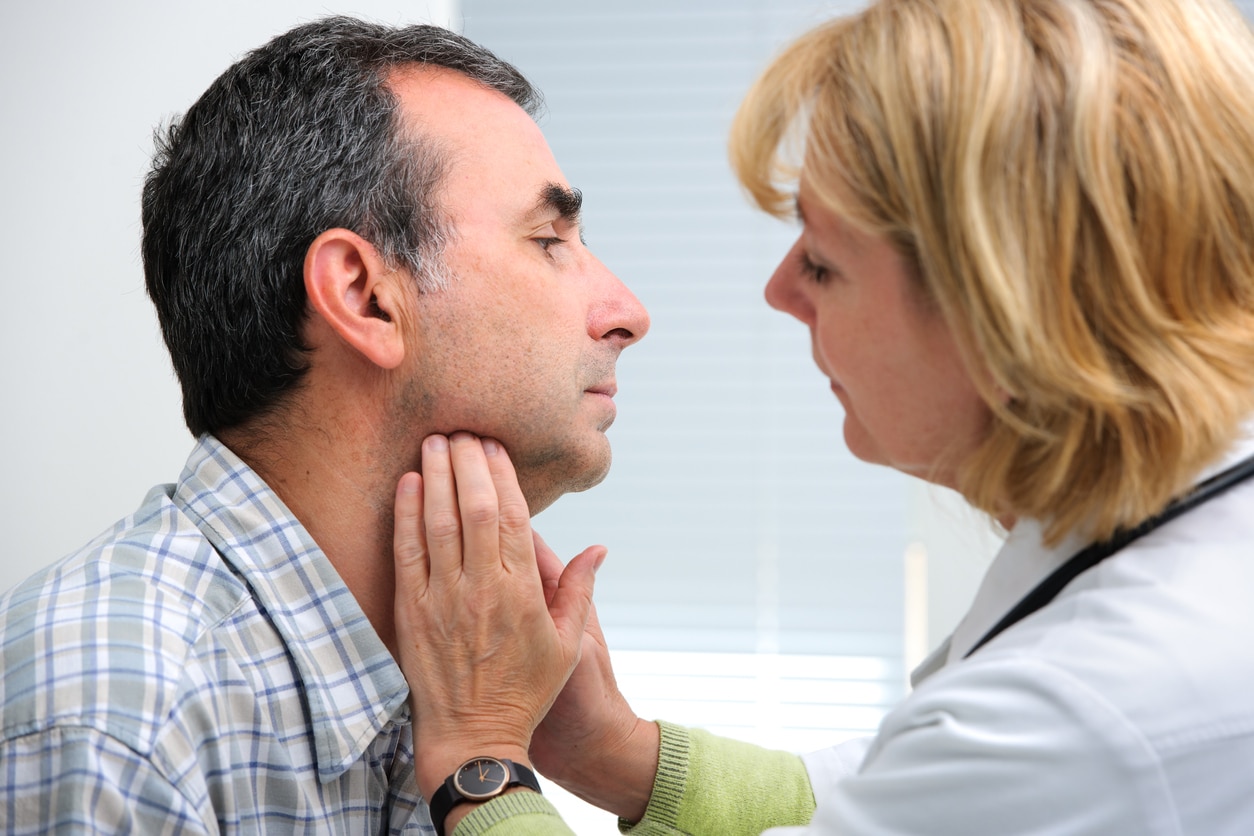Neck & Throat Cancer

Neck and throat cancers usually form in the squamous cells lining the inside of the mouth, nose, and throat. They are highly curable if detected early, and often respond well to surgery or radiation treatment.
Cancers in this region are classified according to where they are located in the body. They include:
- Oral cavity. This region includes the lips, tongue, hard palate, gums, and mouth.
- Larynx. Comprised of the vocal cords and epiglottis.
- Pharynx. There are three sections of the throat: the nasopharynx (the upper portion, located behind the nose), oropharynx (the middle section, which includes the soft palate and tonsils), and hypopharynx (the lower portion).
- Paranasal sinuses. The nasal cavity.
- Salivary glands. Located at the bottom of the mouth near the jawbone.
Other types of cancers in close proximity, like brain tumors and thyroid cancer, behave very differently and are not considered cancers of the neck and throat.
Causes of Throat Cancer
The majority of neck and throat cancers are caused by tobacco use; smoking cigarettes and chewing tobacco both substantially increase your risk of cancer. Alcohol use, especially in people who also smoke, is another contributing factor. Exposure to industrial toxins, a diet high in red meats and processed foods, human papillomavirus (HPV), Epstein-Barr virus, and acid reflux can all add to your risk.
Symptoms of Throat Cancer
Many symptoms of throat cancer are associated with other, less serious conditions, so don’t worry needlessly if you experience some of these signs. Make an appointment with a doctor for a thorough exam and diagnosis if any of the following symptoms are persistent:
- Chronic cough (especially if you are coughing up blood).
- Hoarseness or other changes in your voice.
- Difficulty swallowing.
- Lumps or sores on the neck.
- Ear or neck pain.
- Sore throat.
- Weight loss.
Your doctor will attempt to rule out other, more common causes first. They will examine your throat with a lighted scope and likely order a biopsy if an abnormality is spotted. Imaging tests, including X-rays, CT scans, MRIs and PET scans, can help your doctor see how far your cancer has spread. Once diagnosed, the cancer will be assigned a stage (I-IV) that indicates its extent and helps determine which course of treatment to pursue.
Treatment Options
Treatment for throat cancer depends on the tumor’s size, location and whether it has spread to other areas of the body. Radiation therapy, surgery and chemotherapy – or a combination of the three – may be employed.
Radiation therapy delivers radiation to the cancerous cells through X-rays or other high-energy beams, causing them to die. It is most effective in early-stage cancers, where it may be the only treatment necessary.
Surgery can be effective for cancers of various stages. Procedures to remove all or portions of your voice box (laryngectomy) or throat (pharymgectomy) may be necessary. If cancer has spread to the lymph nodes, a neck dissection to remove those cancerous cells may be recommended.
Chemotherapy relies on chemicals to kill cancer cells. It is often used in combination with radiation therapy for better results.
Following treatment, you may need speech therapy or swallowing therapy, depending on the procedure(s) performed.
Prognosis
If detected early, throat cancers have a cure rate of 90 percent. If cancer has spread to surrounding tissues or lymph nodes, it is curable in 50 to 60 percent of patients.
To make an appointment with a Lake Jackson ENT & Med Spa provider, visit our online scheduling link.